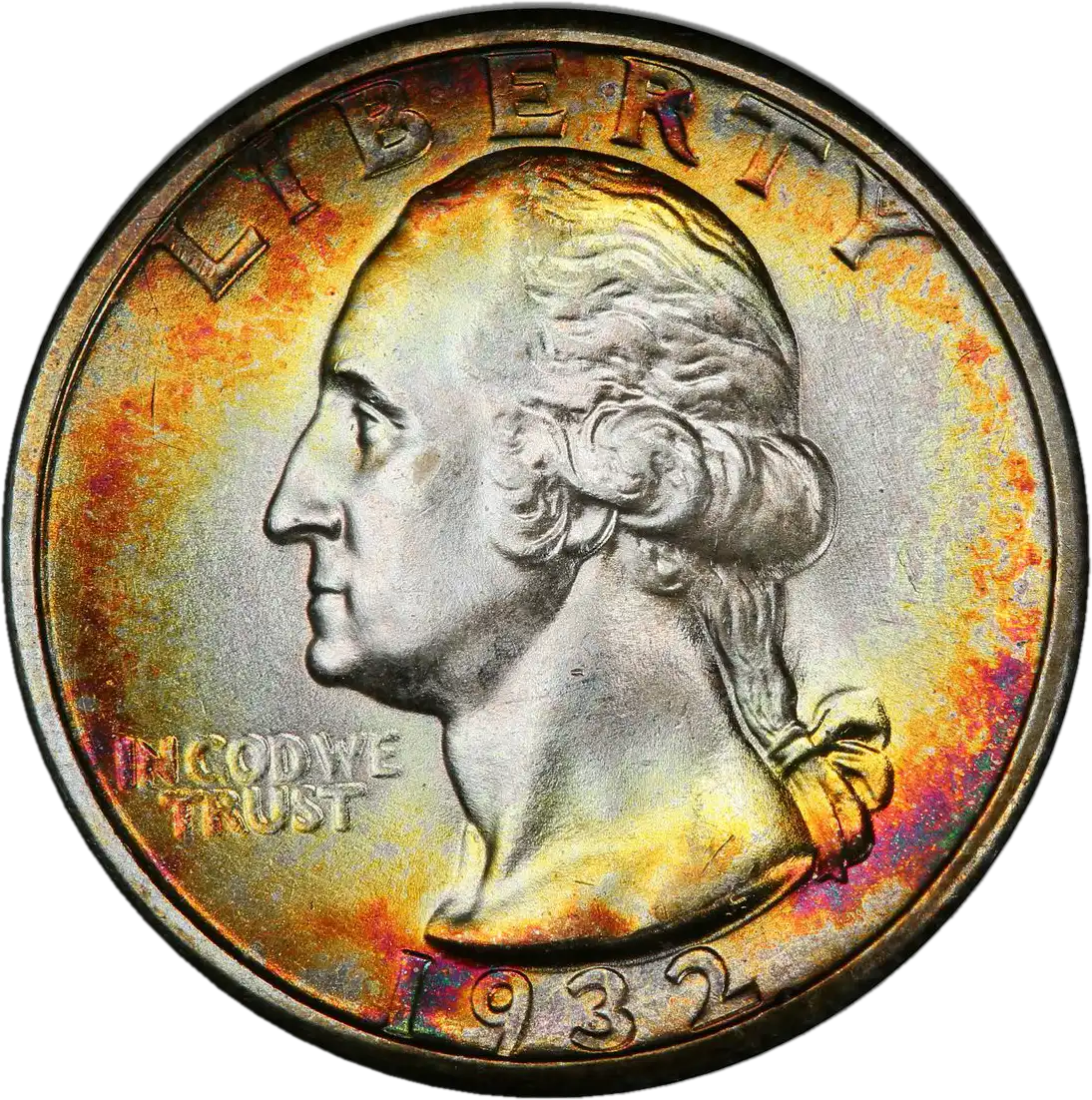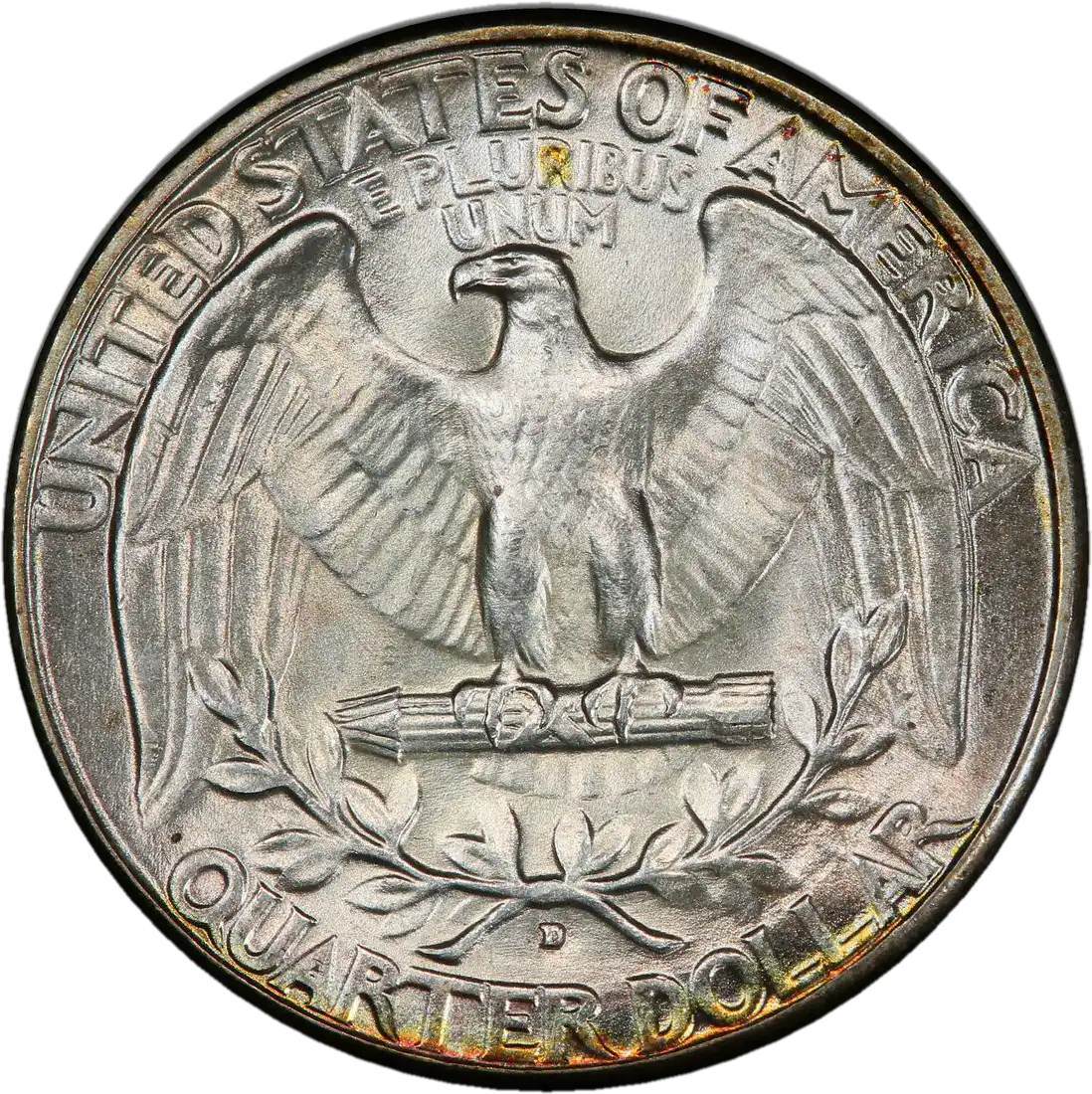USA 25 cents Washington Quarter 1932-D
USA, Denver


Rarity
Scarce
Attributes of Coins
| Melt Value | $11.23 5.625g Silver |
|---|---|
| Region | USA |
| Denomination | ¼ dollar |
| Krause number | KM# 164 |
| Mintage | 436,800 |
| Metal | Silver 0.900 |
| thickness | 1.75 mm |
| diameter | 24.26 mm |
| weight | 6.25 g |
Obverse:

Head of state
Description:
George Washington (1st President of the USA)
Creators:
John Flanagan (JF)
IN GOD WE TRUST
LIBERTY
Reverse:

Bird
Description:
Eagle
Creators:
John Flanagan (JF)
E PLURIBUS UNUM
QUARTER DOLLAR
UNITED STATES OF AMERICA
Introduction of Coins
The 1932 quarter dollars were not needed for commerce at the time, as business activity was at its nadir that year. These coins were produced as commemorative issues that would, eventually, enter general circulation. All three mints struck Washington Quarters, but production at the Denver and San Francisco Mints was limited to the potential number of collectors desiring three-piece sets. This number was really around 15,000-20,000, but such low mintages would have resulted in the coins selling at a premium from the very start, something the Treasury wished to avoid for fear of criticism. Indeed, the San Francisco Mint had been ordered to resume striking unneeded nickels the year before, when it was discovered in Washington that a mere 194,000 pieces were coined early in 1931. Thus it was that just over 436,000 quarters were coined at the Denver Mint in 1932, a number sufficient to curb speculation at the time. No one could have imagined that millions of persons would be added to the roster of coin collectors a generation later, which led to the hoarding of 1932-D quarters and rapid price increases. It appears that most of this mintage did enter circulation, probably in 1934 when production resumed at Denver. Mint State examples are scarce, though not truly rare. Gems, however, are quite rare, and few coins have been certified as MS 65 or higher. Worn specimens are plentiful, particularly in the lower grades. Most MS survivors are well struck and have satiny or finely frosted luster. Nicely toned examples are rare and carry significant premiums. The Small D mintmark used 1917-34 is the only style seen for this date, as the Large D did not debut until the cent coinage of 1933. It is often seen with strike doubling after its lower edge, and this can contribute to the authentication of 1932-D quarters. Many Philadelphia Mint coins have had a D mintmark applied to them, and this is often of the wrong style for the date.Read More













